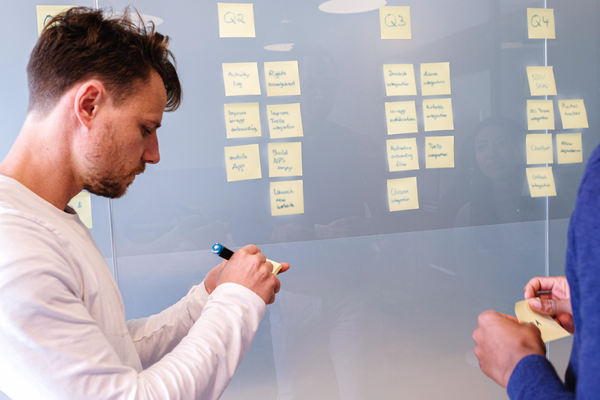Here we talk about a change project from the automotive sector. One of our clients with whom we have been working trustfully for many years:

01
November
2022
Outplacement and change-communication
Facts & figures about the client:
It is an international corporation.
Headquarters in the USA, European headquarters in Spain and about 120 full-time employees.
We initially supported the HR department with employee surveys, structure development and also with training (including conception, implementation and statistical evaluation with subsequent measures) in German and English.
The challenge:
The most successful product was losing more and more sales. Sales figures were falling continuously and were clearly moving towards double-digit percentages.
What would you do when the products no longer perform as well as usual, but the next generation still needs about 18 months of development?
Accordingly, the solution strategy was a three-part strategy:
1. maintain market share through different incentive systems,
2. reduce the innovation gap to a maximum of 9 months,
3. reduce staff surpluses that had been identified for some time by reorganizing functions and processes. For point 3, this meant that employees would also leave the company.
Here SEMA supported with outplacement assistance and change communication.
This may all sound overwhelming, but here is our approach to problem solving:
Our approach:
After contacting us on short notice, we staffed our SEMA team (3 senior consultants) and started the first analysis together with the Head of HR.
First of all, we had to clarify who would stay and who would have to leave us. And also the question whether our case was a mass dismissal that had to be reported.
In the days that followed, we were able to favorably rule out the latter. The fact that we did not have to list the layoffs with the Federal Employment Agency relieved us enormously in the project design.
We began by developing the change communication:
1. what is the central story line? and
2. who says when, what, where and how?
The answer: a communication plan that defined exactly what needed to be done and who was responsible.
Central to this approach was outplacement counseling for all employees.
It stipulates that all those leaving the company have a counseling session with us at their disposal. Here, it is very important to trust and advise each employee individually.
We were able to talk about leaving the organization, support the application phase for new jobs and finally accompany the onboarding at the new employer.
As a result, we were able to transfer 95% - of all leaving employees - to new employment within our mentoring period!!!
Then it continued with the executive coaching:
Here, the managers were prepared for the separation talks. In these cases, the discussions have to be conducted very carefully. And we gave them the right tools for this.
Always with a clear goal in mind:
Consistency in message and honesty in attitude.
Without beating around the bush.
The employees who remained in the company were prepared and accompanied for the change within the organization:
Not only the internal communication, but also the team culture had to be looked at more closely.
Through various team culture workshops, we were able to address collaboration, innovation management and customer approach in a more targeted manner and help the company to better prepare its teams for the coming period.
In doing so, we managed to evolve the team identity from a "working through mindset" to a "shaping the future mindset".
So, all-in-one, it was a matter of questioning more deeply the culture and the way of communication.
After all, leaving "only" the employees without further action would not lead to sustainable success in the long term.
Thanks to the change, the company was able to become more orderly and resilient to market changes.
Ultimately, a space for new things developed in the organization.
And this allowed new products and services to emerge, thanks to which the market situation improved.
It was an honor for our team to be part of this change!
Do you have any questions or comments about the case Study? Feel free to contact us by email at info@sema-consult.com or use the contact formular!
Here you can find more case studies


